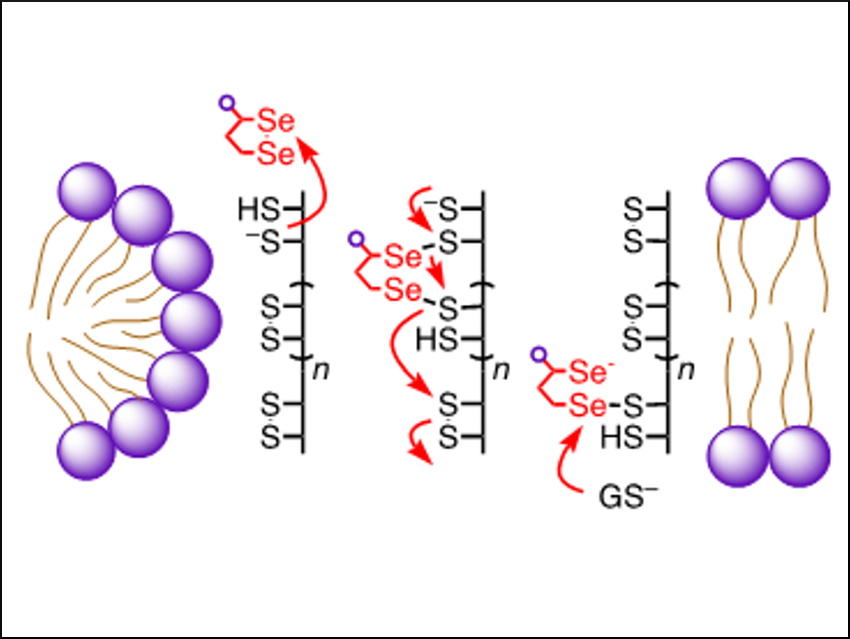Finding new ways to deliver cargo into cells is a challenge in the life sciences. Solutions from chemistry could help with this problem. Stefan Matile, University of Geneva and National Centre of Competence in Research (NCCR) Molecular Systems Engineering, Basel, both Switzerland, and colleagues have found that diselenolanes can deliver biologically relevant substrates efficiently into the cytosol (i.e., the intracellular fluid) of various cells.
The team used diseleno lipoic acid and connected it with the intended cargo using non-covalent interactions. They used confocal laser scanning microscopy (CLSM) to track the transport into different types of cells, e.g., HeLa Kyoto cells derived from human cervical cancer and mouse myoblast cells. The system can transport, for example, peptide probes, artificial metalloenzymes, or quantum dots useful for bioimaging.
According to the researchers, the transport could be explained by dynamic covalent dichalcogenide exchange chemistry. The diselenolanes “walk” along disulfide “tracks” in membrane proteins (pictured) and melt their way across the bilayer membrane by temporary local denaturation of the proteins. The system can transport substrates which are two orders of magnitude larger than the diselenolanes.
- Diselenolane-Mediated Cellular Uptake: Efficient Cytosolic Delivery of Probes, Peptides, Proteins, Artificial Metalloenzymes and Protein-Coated Quantum Dots,
Eline Bartolami, Dimitris Basagiannis, Lili Zong, Rémi Martinent, Yasunori Okamoto, Quentin Laurent, Thomas R. Ward, Marcos Gonzalez-Gaitan, Naomi Sakai, Stefan Matile,
Chem. Eur. J. 2019.
https://doi.org/10.1002/chem.201805900




